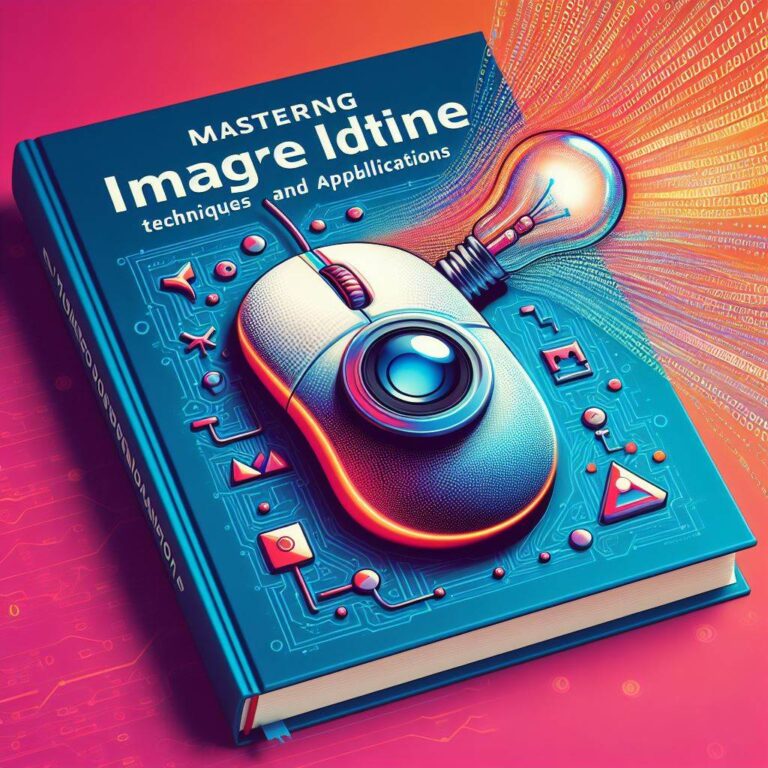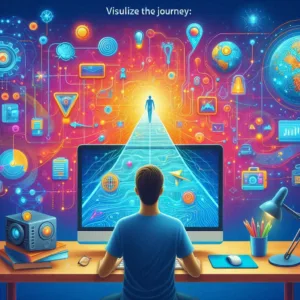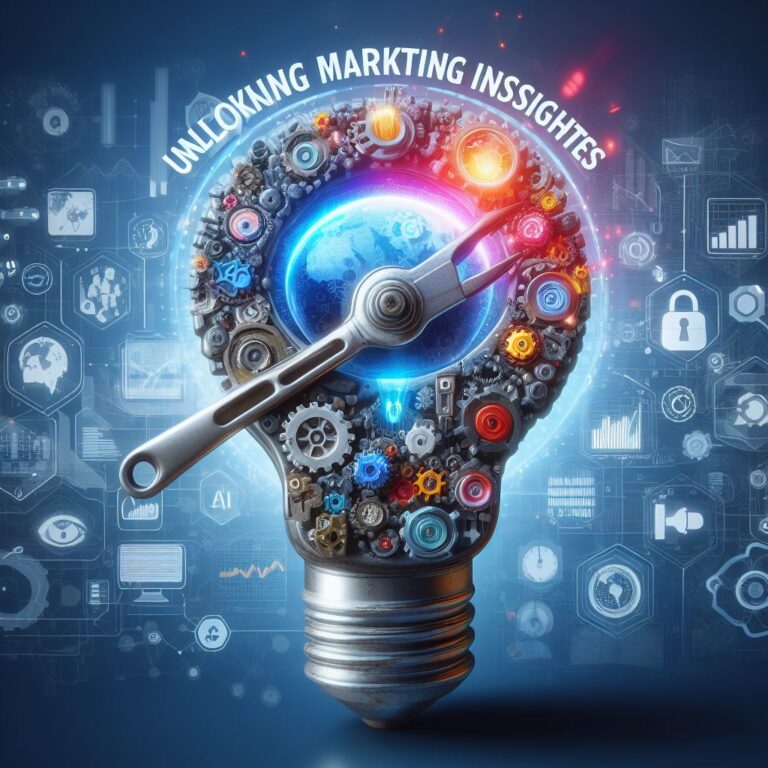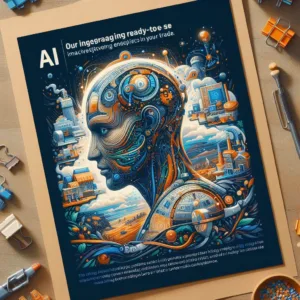Table of Contents
Toggle
In today’s digital age, storytelling has taken on a whole new dimension with the advent of Artificial Intelligence (AI). Imagine crafting narratives that dynamically adapt to readers’ choices, providing an immersive and personalized experience. This is the power of interactive storytelling with AI. In this guide, we’ll explore how writers can harness AI technology to create captivating narratives that resonate with audiences.
Understanding Interactive Storytelling
Interactive storytelling is a narrative technique that enables readers or viewers to actively participate in the story. Unlike traditional linear narratives, interactive stories allow for branching pathways, where choices made by the audience influence the direction of the plot. This creates a sense of agency and immersion, making the audience feel like active participants rather than passive observers.
The Role of AI in Storytelling
AI plays a crucial role in interactive storytelling by powering the algorithms that drive dynamic narratives. Natural Language Processing (NLP) algorithms analyze user input and generate appropriate responses, allowing for seamless interaction between the audience and the story world. Machine learning algorithms also help in personalizing the story experience based on user preferences and behavior.
Tools for Interactive Storytelling
Several AI-powered tools and platforms are available to assist writers in creating interactive narratives. These tools often provide intuitive interfaces for designing story structures, managing branching pathways, and integrating multimedia elements. Some popular examples include Twine, Ink, and ChatGPT, which offer a range of features tailored to different storytelling needs.

Crafting Engaging Narratives
Writing compelling interactive narratives requires a combination of creativity, empathy, and technical skill. Writers must craft characters and plots that are compelling and relatable, while also considering the various branching pathways that the story may take. Balancing player agency with narrative coherence is essential to creating an immersive and satisfying experience for the audience.
Personalizing the Reader Experience
One of the key advantages of AI-powered storytelling is the ability to personalize the reader experience. By analyzing user data and behavior, AI algorithms can tailor the story content to suit individual preferences and interests. This not only enhances engagement but also fosters a deeper emotional connection between the audience and the story world.
Ethical Considerations
While AI offers exciting possibilities for storytelling, it also raises important ethical considerations. Writers must be mindful of issues such as data privacy, algorithmic bias, and the potential impact of immersive narratives on vulnerable audiences. Ensuring transparency, consent, and inclusivity should be paramount when designing AI-powered storytelling experiences.
Future of AI in Storytelling
As AI technology continues to advance, the future of storytelling looks increasingly interactive and immersive. We can expect to see more sophisticated AI algorithms capable of generating dynamic narratives in real-time, as well as innovations in virtual and augmented reality that further blur the lines between fiction and reality. Exciting times lie ahead for storytellers and audiences alike.
Conclusion
Interactive storytelling with AI represents a groundbreaking shift in the way stories are created and consumed. By leveraging AI technology, writers can craft narratives that are not only immersive and engaging but also personalized to the individual preferences of the audience. As we look to the future, the possibilities for AI-powered storytelling are limited only by our imagination.
FAQs
Q1. How does AI contribute to interactive storytelling?
AI powers the algorithms behind interactive storytelling, enabling dynamic narratives where user choices influence the plot.
Q2. Are there any ethical concerns associated with AI in storytelling?
Yes, ethical considerations such as data privacy, algorithmic bias, and the impact on vulnerable audiences are important to address when using AI in storytelling.
Q3. What are some popular tools for creating interactive narratives?
Popular tools include Twine, Ink, and ChatGPT, each offering unique features for designing and implementing interactive stories.
Q4. How can writers ensure a balance between player agency and narrative coherence?
Writers must carefully design branching pathways and character interactions to maintain coherence while allowing for meaningful player choices.
Q5. What does the future hold for AI-powered storytelling?

The future promises even more interactive and immersive storytelling experiences, with advancements in AI algorithms and virtual/augmented reality technologies.
Interactive storytelling with AI opens up a world of possibilities for writers, offering new ways to engage audiences and create memorable experiences. By embracing this technology and considering the ethical implications, writers can harness the full potential of AI to craft compelling narratives that resonate with readers.
In the ever-evolving landscape of storytelling, writers are constantly seeking innovative ways to captivate audiences. With AI, writers have a powerful ally that not only enhances creativity but also enables them to reach new heights in storytelling.
Imagine a reader stepping into a story where their decisions shape the outcome, where the narrative responds dynamically to their choices. This level of engagement goes beyond traditional storytelling, creating an immersive experience that leaves a lasting impression.
AI algorithms analyze user input, interpret context, and generate responses in real-time, blurring the lines between fiction and reality. This seamless interaction between the audience and the story world is what makes interactive storytelling with AI so compelling.
As a writer, embracing AI technology opens up a world of possibilities. Whether you’re crafting a branching narrative for a video game, designing an interactive story app, or experimenting with AI-generated plot twists, the tools and resources available today make it easier than ever to bring your creative vision to life.
But with great power comes great responsibility. Writers must be mindful of the ethical implications of AI-powered storytelling. Issues such as data privacy, algorithmic bias, and the potential impact on vulnerable audiences must be carefully considered and addressed.
By prioritizing transparency, consent, and inclusivity, writers can ensure that their AI-powered storytelling experiences are not only entertaining but also ethically sound. In doing so, they can harness the full potential of AI to create stories that resonate with audiences on a deeper level.
In conclusion, interactive storytelling with AI represents a new frontier for writers, offering unprecedented opportunities for creativity and engagement. By understanding the role of AI in storytelling, embracing ethical guidelines, and leveraging the available tools and resources, writers can embark on a journey of innovation and exploration, shaping the future of storytelling one narrative at a time.
Illustration Prompts for Intelligently Narrating:
The Puzzling Entryway:
“As you approach a broken down building, you take note a bizarre entryway that appears to sparkle with an otherworldly gleam. Do you set out to enter? What lies past?”
The Choice at Intersection:
“You discover yourself at a intersection, with three distinctive ways extending out some time recently you. Each way leads to a diverse enterprise, but which is able you select? Cleared out, right, or straight ahead?”
The Charmed Timberland:
“Misplaced within the profundities of an charmed woodland, you bumble upon a clearing where magical animals accumulate for a fantastic celebration. Will you connect within the merriments, or proceed on your travel more profound into the woodland?”
The Time Traveler’s Predicament:
“A secretive figure offers you the chance to travel back in time to any minute in history. What period will you select to visit, and what results might your activities have on the course of history?”
The Journey for the Misplaced Artifact:
“Rumors talk of a effective artifact covered up profound inside an antiquated sanctuary. As you set out on your journey to discover it, you must explore misleading traps and fathom enigmatic confuses. Will you succeed in revealing the artifact’s insider facts?”
AI Resources and Insights
- AI Art Generator on Canva: Explore how to create art with AI on Canva.
- NVIDIA Startups: Discover opportunities for startups with NVIDIA.
- Konverge AI: Learn how Konverge AI can transform your business.
- Heygen Pricing: Check out Heygen’s pricing for AI solutions.
- DataCentric AI: Explore the latest AI trends on DataCentric AI.
- Google Cloud Conversational AI: Discover Google Cloud’s conversational AI solutions.
- Amazon Web Services (AWS): Explore Amazon Web Services’ AI services.
- Marketing AI Institute: Learn more about AI-powered marketing at the Marketing AI Institute.
- Harvard Business Review – AI Marketing Strategy: Read about designing an AI marketing strategy on Harvard Business Review.
- SAS – AI Marketing Future: Discover what the future holds for AI marketing on SAS.
- Sprout Social AI Marketing Tools: Explore AI marketing tools from Sprout Social.
- Pixlr Image Generator: Create unique images with Pixlr’s image generator.
- Creative Writing Prompts on AI UpTrend: Explore creative writing prompts powered by AI on AI UpTrend.
- AI Trends on AI UpTrend: Discover the latest AI trends on AI UpTrend.
- AI Insights on AI UpTrend: Explore the latest advancements in AI on AI UpTrend.
- AI Tools on AI UpTrend: Discover a variety of AI tools on AI UpTrend.
- AI Tutorials on AI UpTrend: Explore AI tutorials to deepen your knowledge on AI UpTrend.






























